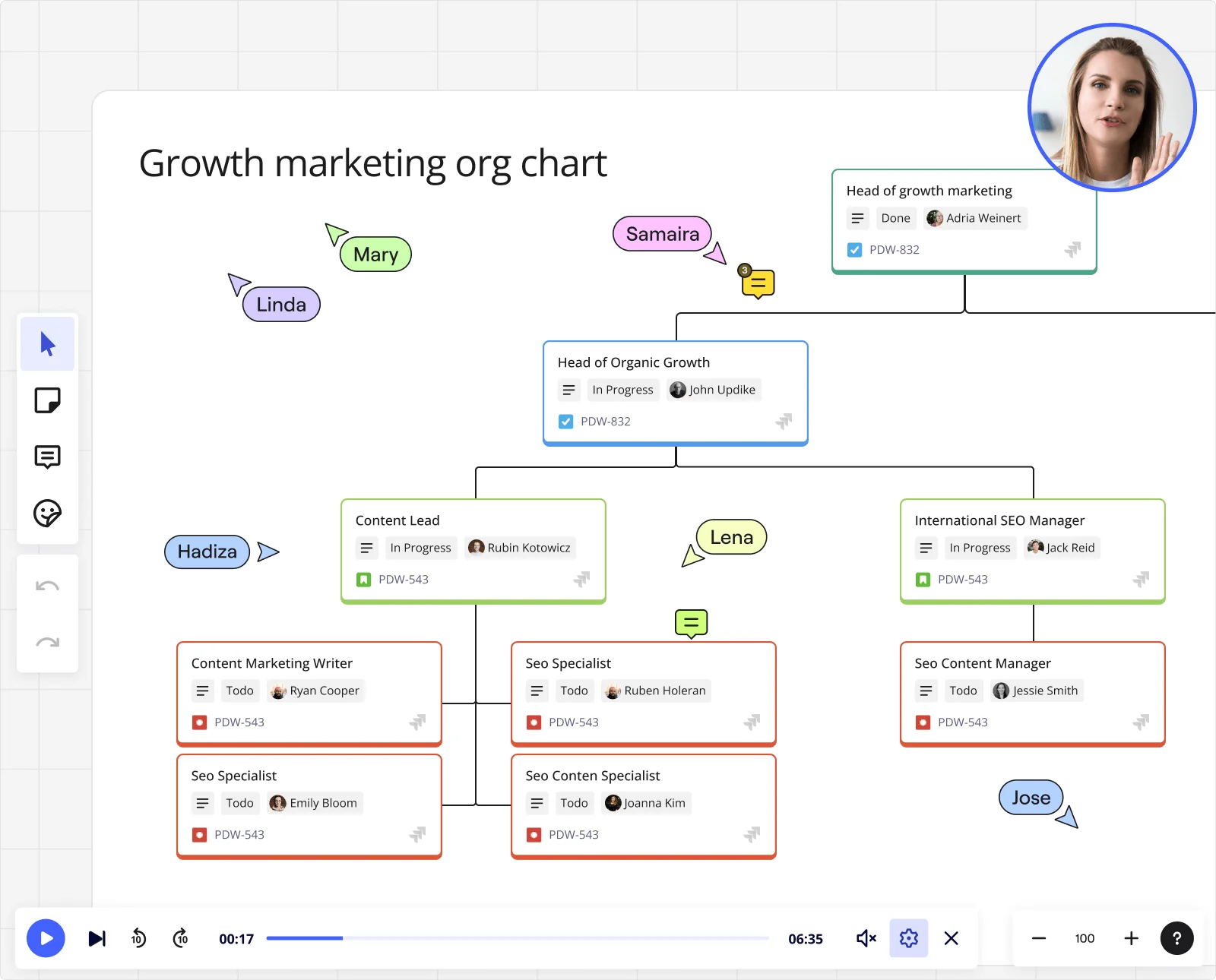
Table of contents
Table of contents
What is a matrix organization?

Introduction to matrix organizations
Understanding the essence of a matrix organization requires delving into its unique inter-departmental dynamics. In this article, we’ll explore the foundational concepts that give the matrix its unique identity, and why it has emerged as an essential model in the business world.
Brief overview of organizational structures
Organizations have evolved over time, adopting various structures to meet their operational needs. From strict hierarchies to flat configurations, the choice of structure profoundly impacts communication, decision-making, and overall efficiency.
The rise of the matrix structure
As businesses grew more global and complex, there emerged a need for an organizational model that could blend functional expertise with product or project focus. Enter the matrix structure, an adaptable design that optimizes both vertical and horizontal flows of authority and communication.
Check out Miro's Matrix Org Chart Template
Key components of a matrix organization
A matrix organization isn’t just a blend of various departments. It’s a meticulously crafted structure built on core components. In this segment, we'll decode these vital elements that drive a matrix.
Dual reporting relationships
In a matrix, individuals report to both functional managers and product or project managers. This dual reporting system fosters collaboration but also demands adept navigation of potential role conflicts.
Flexible team dynamics
Team compositions in a matrix can be fluid, changing based on project needs. This adaptability ensures the right skills are harnessed at the right time.
Horizontal and vertical flows of information
Information in a matrix flows both ways - top-down (hierarchical) and side-to-side (across functions or projects). This ensures a holistic dissemination and gathering of data.
Variations: Weak vs. strong matrix organizations
The strength of a matrix defines its operational dynamics and power distribution. Here, we differentiate between the two primary variations and discuss finding the right balance.
Characteristics of a weak matrix
A weak matrix leans more towards the functional side. While there's a project manager, their authority is limited, making it appear closer to a functional hierarchy.
Characteristics of a strong matrix
In a strong matrix, the project or product manager holds more sway. They possess substantial authority over budgeting, staffing, and administration, making it more project-centric.
Determining the right balance for your organization
Selecting between a weak or strong matrix hinges on your organizational priorities. Is project success pivotal? Or is functional expertise the cornerstone? Answering such questions will guide the choice.
Comparing matrix to other organizational structures
Every organizational model offers a unique perspective on operations and roles. This section seeks to position the matrix in relation to others, elucidating its distinct attributes.
Matrix vs. Hierarchical
While hierarchical structures revolve around top-down authority, a matrix promotes lateral collaboration, breaking down silos that can exist in traditional hierarchies.
Matrix vs. Flat (or Horizontal)
Flat organizations minimize middle management, fostering a culture of equality. Matrix organizations, while promoting collaboration, still retain multiple managerial levels.
Matrix vs. Networked
Networked structures focus on outsourcing and leveraging partnerships. The matrix, in contrast, centers on internal cross-functional collaboration.
Benefits of adopting a matrix structure
Embracing the matrix brings forth advantages tailored to a dynamic business landscape. From fostering collaboration to optimizing resources, the benefits are transformative.
Enhanced collaboration and communication
By design, matrix organizations promote interaction across diverse teams, ensuring insights are shared and tapped from all quarters.
Resource allocation and utilization
With its dual focus, the matrix optimizes resource allocation, ensuring departments and projects have what they need when they need it.
Adaptability in a dynamic business environment
In an ever-shifting business landscape, a matrix organization's ability to recalibrate teams and focus quickly is invaluable.
Challenges in a matrix organization
Despite its merits, the matrix presents unique challenges. From potential role conflicts to decision-making bottlenecks, it's vital to be cognizant of these pitfalls.
Potential for role confusion
With dual reporting lines, employees might grapple with conflicting directives, necessitating clear communication channels.
Decision-making bottlenecks
Matrix structures, if not managed efficiently, can lead to delays in decision-making, given the multiple stakeholders involved.
Navigating power dynamics
The balance of power between functional and project managers can sometimes lead to turf wars, underscoring the need for defined roles and responsibilities.
Conclusion on matrix organizations
Choosing an organizational structure is paramount, with broad implications for operations, culture, and growth. As we’ve traversed the multifaceted realm of the matrix organization, the salient takeaway is its unique blend of adaptability and structure.
However, its success hinges on diligent implementation, continuous assessment, and fostering an ethos of collaboration. Businesses must introspect, evaluating their unique needs and challenges, to confirm if the matrix structure is their pathway to sustained growth and innovation.